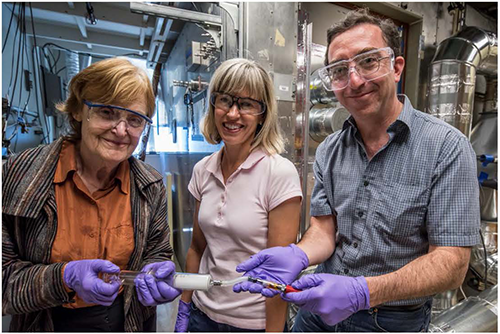Electronic Cigarettes and Emissions: New chemicals found add to potential health risks
Electronic cigarettes, or e-cigarettes, and other such products are increasingly being marketed as alternatives that do not generate harmful or potentially harmful constituents (HPHC) as in combustible cigarettes. These products attract youth by design and appeal of flavorings. Such marketing strategies overshadow the fact that electronic cigarettes are not harm-free by any measure.
According to the California State Health Officer’s Report on E-Cigarettes, teen use of e-cigarettes has now surpassed the use of combustible cigarettes and young adults are three-times more likely to use e-cigarettes than those 30 and older. The Report also underlines the findings that the mainstream and secondhand e-cigarettes aerosol has already been found to contain at least ten chemicals that are on California’s Proposition 65 list of cancer-causing chemicals, and toxins leading to birth defects and reproductive harms.
Now, TRDRP-funded research at the Lawrence Berkeley National Lab (LBNL) finds new toxins in the emissions, based on how electronic cigarettes (e-cigarettes) are consumed.
The LBNL research team led by Drs. Hugo Destaillats, Mohamad Sleiman, and Lara Gundel discovered that the increase in harmful emissions is driven by the voltage used for heating coils in these e-cigarette devices. The team also detected new potentially harmful chemicals in the tested “e-liquids”.
In addition to previously known “e-liquid” constituents such as propylene glycol, glycerine, nicotine, alcohol, acetol, the team also detected propylene oxide – a potential carcinogen and breathing irritant.
The vaping aerosols contained over 30 chemical compounds such as nicotine, nicotyrine, formaldehyde, acetaldehyde, acrolein, and acetol. A new compound in these aerosols was identified as glycidol, a probable or anticipated carcinogen by definitions of World Health Organization (WHO) and International Agency for Research on Cancer (IARC), and US EPA. Under the State of California Proposition 65, glycidol is known as a compound to cause cancer.
The study found that heating of the toxic chemicals in “e-liquids” generates additional harmful and potentially cancer-causing agents. The dose and levels at which these chemicals may exert a harmful effect on human health vary, and some case remain unknown.
The study says that, “Because emissions originate from reaction of the most common e-liquid constituents, harmful emissions are expected to be ubiquitous when e-cigarette vapor is present.”
References:
1. Emissions from Electronic Cigarettes: Key Parameters Affecting the Release of Harmful Chemicals
2. California State Health Officer’s Report on E-Cigarettes
3. Cardiovascular Perspective of the Promises and Perils of E-Cigarettes
Pictured at right (left to right): LBNL research team members: Drs. Lara Gundel, Marion Russell, and Hugo Destaillats

